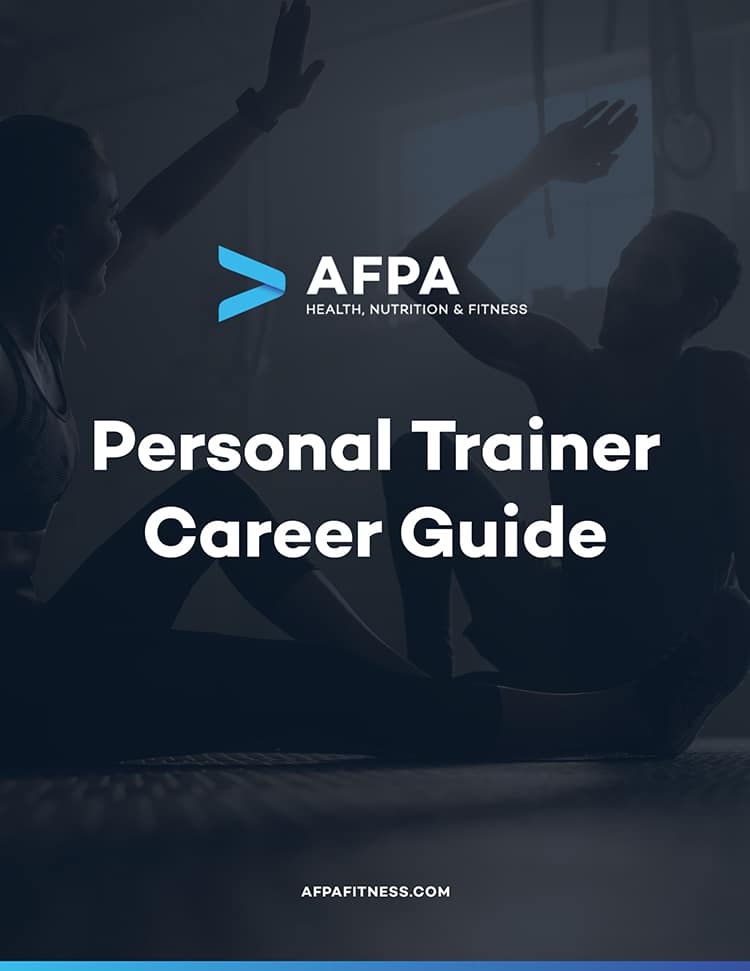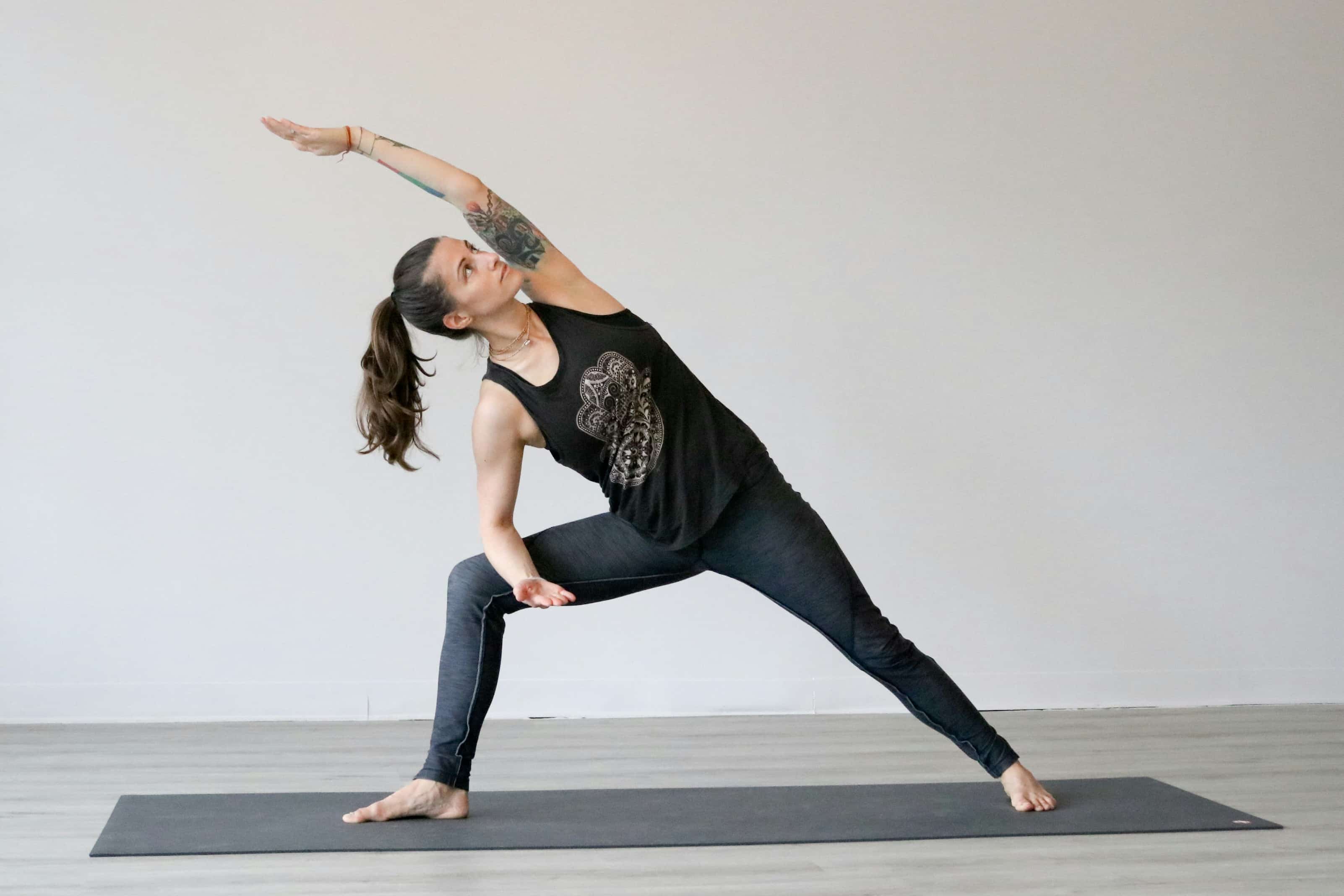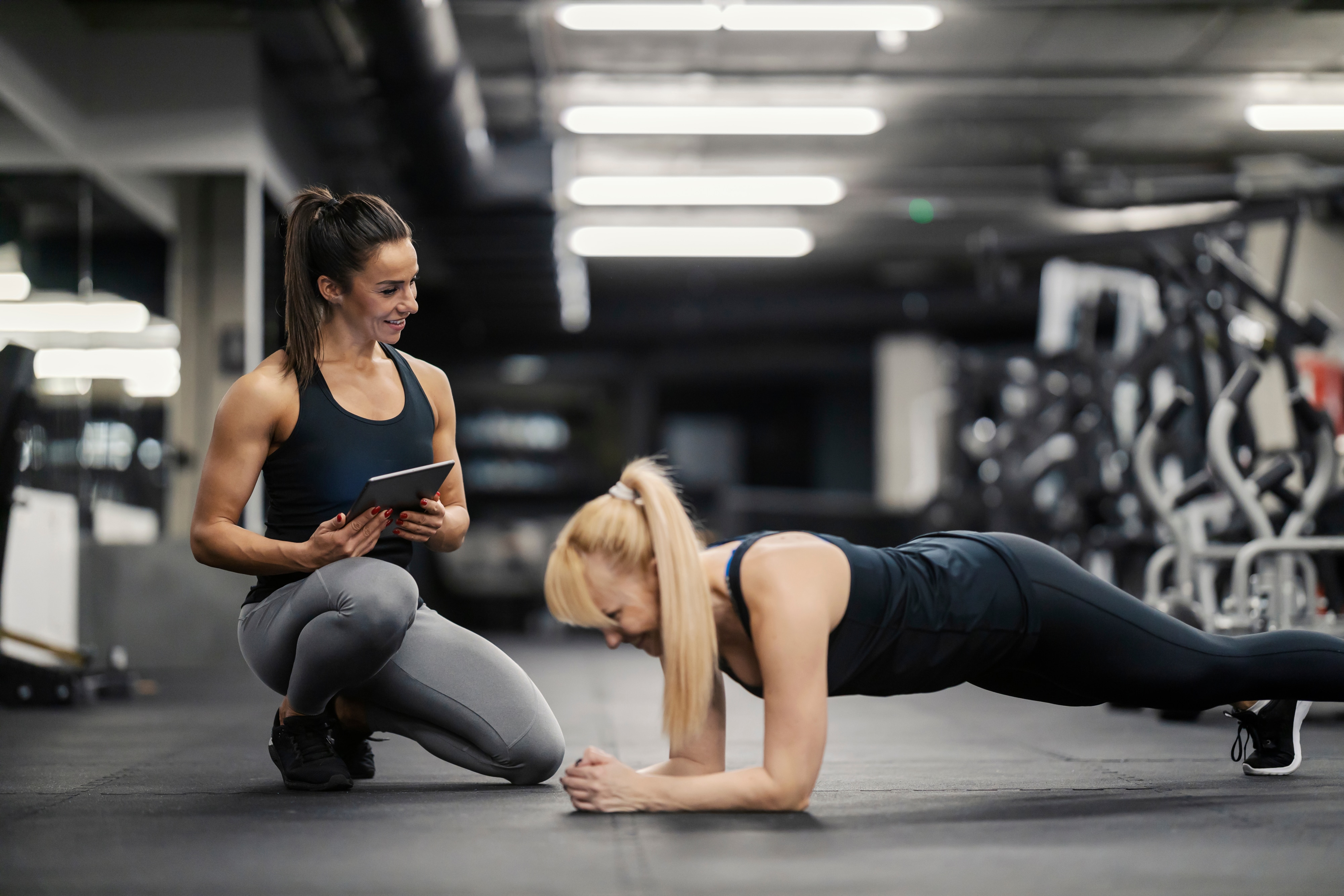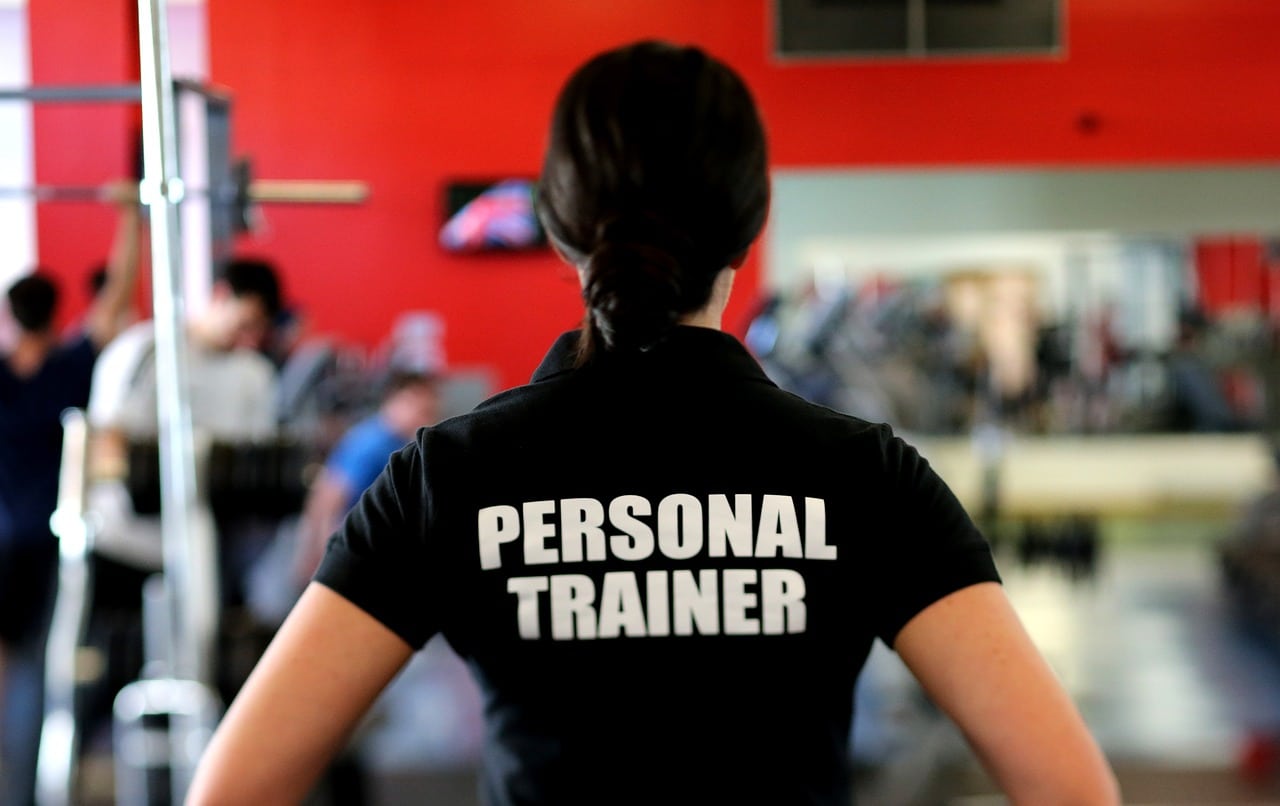Every sports community has developed a language of its own. Fans, players, coaches, and trainers share phrases and references that are only understood by those who know the sport.
The personal training and fitness community is no different. Over time, personal trainers have developed language and communication methods that are generally understood across the board of professionals. From communicating weight, set, and rep goals to nicknames for exercises, there is an entire language that personal trainers adopt, often without even thinking about it.
One of the aspects of “personal trainer language” aimed at modifying your client’s position, muscle activation, or movement is body cues.
Have you ever used any of these phrases with your personal training clients?
“Tuck in your tailbone.”
“Engage your core.”
“Lead with the hips.”
If so, you use body and movement cues. The four main reasons personal trainers use cues are to:
- Prevent injury
- Activate key muscles
- Improve position
- Make the most of an exercise
If your client knows what you want to communicate and is able to use that direction to modify their position, muscle activation, or movement, cues are an effective way to optimize exercises in a few words.
In this article, we list some of the most common and effective movement cues and suggest when to use them with your clients.
Learn How to Become a Certified Personal Trainer Online in Less Than 6 Months

The Role of Supportive Communication in the Personal Trainer – Client Relationship
Supportive communication has the intention of improving the mindset of another person so that they are more open, receptive, and positive. In personal training and fitness coaching, supportive communication is essential to motivating your client to train and feel confident and to encourage receptiveness to correction and movement improvement.
Movement, position, and muscle activation cues become effective when they are paired with supportive communication. Some of the principles of supportive communication as applied to personal training include:
- Listen to and observe your client’s needs and challenges.
- Show interest in what they’re saying by using eye contact and nodding in agreement.
- Allow your client space, and pause after providing movement cues.
- Encourage your client to speak about how their body feels with different exercises and movements. This will help you direct your movement cues more effectively.
- When your client expresses challenges, try to identify the root of the challenges.
- Know when movement cues are not helping, and patiently and slowly detail and model how your client can improve their movement.
- Facilitate clarification when a client is not clear.
- Use incisive questions when you and your client are having difficulty pinpointing an issue.
Supportive communication will help you build strong communication with your client, and it will ultimately improve your client’s results.
7 Effective Movement Cues to Use with Your Client
Tuck in your tailbone.
When to use it: If you notice your client is sticking out their buttocks during movements and exercises where they are on all fours, need to bend their knees, or need to activate their glutes, this movement cue can help your client bring awareness to their midline. Keep in mind that some exercises, like many yoga poses, require a neutral position rather than a deeper, “tucked” position.
Examples of exercises where this cue may be helpful: Many yoga poses where your client’s hips are sticking out; the end position of deadlifts and squats.
What it means: Engage your abs, glutes, and abdominals, and tilt your hips slightly forward.
Feel a two-way stretch.
When to use it: Your client needs to stand up tall or lengthen during a stretch or open stance. It can be used when your client is standing, sitting, or lying down.
Examples of exercises where this cue may be helpful: Abdominal, shoulder, arm, and full-body stretches; resistance exercises with over-the-head weights.
What it means: Lengthen your neck, keep your back straight, and stretch your legs while activating your muscles.
Brace / Engage your core.
When to use it: The abs and lower back muscles stabilize the body, and it should be used to remind clients to keep the core muscles activated even if they aren’t being actively used.
Examples of exercises where this cue may be helpful: Helpful for most exercises that don’t directly engage the abdominal muscles to help prevent injury and activate the core.
What it means: Contract your ab muscles.
Pull your belly button toward your spine.
When to use it: The abs require a deeper activation than for bracing. Make sure it is cueing core muscle activation rather than sucking in; your client shouldn’t have any trouble breathing.
Examples of exercises where this cue may be helpful: The muscle activation during most resistant exercises can benefit from this cue: bench presses, pull-ups, bicep curls, bent-over row, and upright row.
What it means: Activate all layers of your abdominal muscle, especially your transversus abdominis.
Lead with the hips.
When to use it: Your client is doing a squat or lunge, and they are leaning forward too far as to not activate their gluteal muscles to their full potential. Keep in mind that, depending on your client’s height and the depth of their movement, it may be appropriate and safe for their knees to extend beyond their toes, which is why “lead with the hips” tends to be a more helpful cue than “don’t let your knees extend beyond your toes.” As a personal trainer, you need to look for the ideal posture for maximal muscle activation of, first, the glutes, and second, the quads and hamstrings, and this cue can help.
Examples of exercises where this cue may be helpful: Squats, weighted squats, and lunges.
What it means: Move your hips before you move your knees, and shoot your glutes out.
Draw your chin back.
When to use it: The neck is not aligned with the spine and tailbone and could cause overextension, injury or poor focus on key muscles.
Examples of exercises where this cue may be helpful: Horizontal exercises like planks and pushups, and exercises where curving the spine affects weight distribution like deadlifts.
What it means: Align your neck with your spine.
Pinch your shoulder blades.
When to use it: The back is curved, or your client is placing too much focus on the arm or pectoral muscles.
Examples of exercises where this cue may be helpful: Bench presses, pull-ups, bicep curls, bent-over row, and upright row.
What it means: Activate your upper back muscles to improve your posture.
Main Takeaways
Movement cues can help to quickly correct client posture, movement, and muscle activation to get the most out of exercise while also preventing injury.
If your client is new to the fitness world, you may have to model the movement cues and describe what you need them to do. Remember to use supportive communication to create positive relationships with your clients and open avenues to identify issues and improve outcomes session after session.




